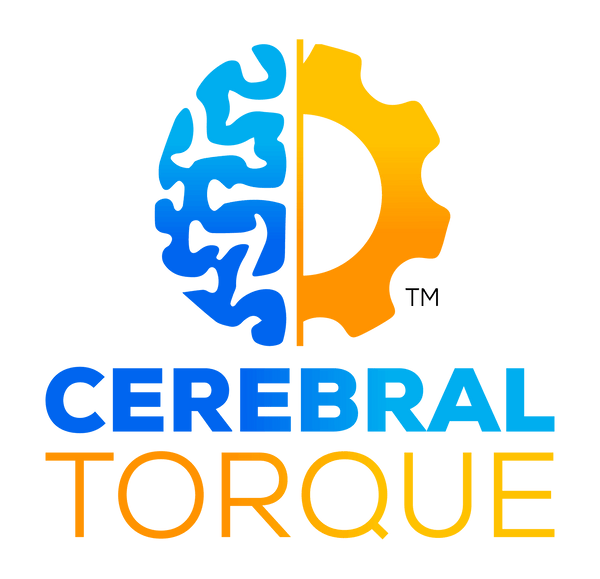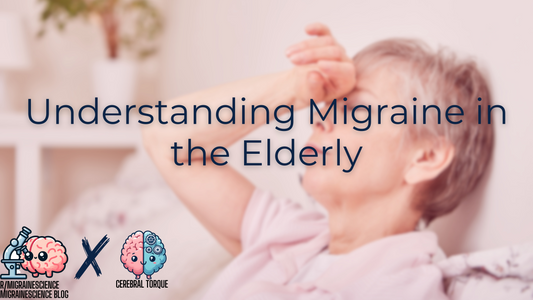
The Complex Interplay Between Head Pain (headache), Migraine, and Stroke
Cerebral TorqueShare
We will look at the epidemiology linking headache, migraine, and stroke and the proposed explanations behind their overlaps.
Understanding these relationships has major implications for prognosis and management. It is essential to recognize that migraine may signal underlying vascular dysfunction in some patients. Let’s break down the current state of evidence.
Headache and Stroke: Common Co-Occurrence
Headaches and stroke are each very prevalent, affecting millions worldwide. Tension-type headaches have a global one-year prevalence of over 40%. Migraine impacts about 15% of the population. And strokes afflict nearly 800,000 Americans annually.
With such high frequencies, their co-occurrence by chance is expected. In fact, most patients report headache around the acute phase of an ischemic stroke. As life expectancy rises and migraine prevalence declines with age, tension headaches that happen to coincide with strokes will become more common.
This is an important phenomenon to recognize, as intense headaches can occasionally be the only presenting symptom of a stroke. Sudden, severe “thunderclap” headaches that peak in seconds demand urgent evaluation for underlying vascular events, especially subarachnoid hemorrhage.
Headache Due to Cerebrovascular Disease
In addition to chance co-occurrence, headache may also result directly from cerebrovascular dysfunction.
Examples:
Subarachnoid Hemorrhage – The classic sudden, severe headaches of ruptured aneurysms are well-known, but minor, sentinel headaches may precede aneurysm rupture by hours or weeks in over 40% of patients. Recognizing and investigating thunderclap headaches is critical for preventing catastrophic bleeding.
Intracerebral Hemorrhage – Mass effect and meningeal irritation from hematoma expansion commonly causes headaches within hours of intracerebral hemorrhage onset.
Ischemic Stroke – Headache around the time of an ischemic stroke probably results from reflex vasodilation and irritation. Up to 40% of patients report headaches in large studies, especially with posterior circulation events.
https://www.ncbi.nlm.nih.gov/pmc/articles/PMC4650791/
Reversible Cerebral Vasoconstriction Syndrome – Recurrent thunderclap headaches over one to four weeks due to transient arterial narrowing are characteristic of RCVS. Chronic migraine headaches may follow the acute phase as well.
A variety of other vascular conditions like Moyamoya disease, cerebral venous thrombosis, and primary CNS vasculitis can also manifest with headache. Recognizing the migraine-like features is essential to prompt appropriate testing and treatment.
Therefore, new acute headaches in patients with (and without, but especially with) stroke risk factors should prompt rapid investigation for underlying structural lesions before dismissing them as primary headache disorders. This will likely include neuroimaging even though this is not necessary for a diagnosis of migraine.
Migraine as a Cause of Stroke
So, we talked about when headaches coincide with or result from cerebrovascular disease, but might migraine also trigger strokes directly?
Migrainous infarction refers to ischemic strokes attributed to severe migraine attacks with aura. Diagnostic criteria from the ICHD-3 require:
- A migraine attack fulfilling criteria B and C
- Occurring in a patient with 1.2 Migraine with aura and typical of previous attacks except that one or more aura symptoms persists for >60 minutes
- Neuroimaging demonstrates ischemic infarction in a relevant area
- Not better accounted for by another ICHD-3 diagnosis.
However, it is often difficult to definitively implicate migraine as the cause of stroke in each patient. Results vary widely between studies on migrainous infarction frequency, depending greatly on definitions used. Estimates range from 0.2% to 0.5% of ischemic strokes attributed to migraine. Broader terms like “migraine-related stroke” include cases without associated aura as well.
There is little debate that migraine with aura at least modestly increases future risk of stroke, likely through neural, vascular, platelet, and other effects acutely altering cerebral perfusion during severe attacks. Still, whether migraine directly triggers stroke pathophysiology remains controversial. The evidence for causation is weaker than that for vascular risk association.
Migraine as a Risk Factor for Stroke
A wealth of population research links migraine headaches to increased risk for eventual vascular events. A meta-analysis of 21 observational studies found that subjects with any migraine had an increased risk of ischemic stroke compared to those without migraine.
https://pubmed.ncbi.nlm.nih.gov/20493462/
The migraine subtypes, comorbidities, and patient factors that enhance this risk include:
- Migraine with aura: Consistently confers higher risk than migraine without aura, likely related to more severe vascular dysfunction during attacks.
- Females under 45 years old: Younger females with migraine bear the highest stroke risk amplification.
- Oral contraceptive use: Estrogen-containing contraceptives further augment stroke risk in patients with migraine.
- Smoking: Synergistically interacts with migraine to heighten stroke risk nearly tenfold.
https://www.ncbi.nlm.nih.gov/pmc/articles/PMC2768778/
The absolute risk increase is modest for individual patients, but understanding migraine as a vascular risk factor has significant implications for management. Careful attention to other stroke risks also allows for possible early intervention.
Distinguishing Vascular Events from Migraine
Migraine attacks, particularly those involving aura, can closely mimic transient ischemic attacks and even stroke (see hemiplegic migraine, for example). Similarly, acute cerebrovascular events like ischemic strokes occasionally present with headache, but no other deficits.
How can we tell the difference? Migraine auras typically evolve gradually over 5+ minutes, involve positive symptoms like flashing lights, and spread slowly between symptoms. Stroke symptoms generally peak immediately, cause negative neurological deficits, and progress rapidly between vascular territories.
Migraine attacks also usually recur periodically in those predisposed to them. But sudden, prolonged, or atypical “aura” symptoms demand neuroimaging to exclude cerebrovascular causes. Persistent sensorimotor loss following headaches requires urgent evaluation regardless of migraine history.
It’s always good to watch out for red flags using the SNNOOP10 criteria.
Testing guided by headache characteristics and vascular risk factors is key to distinguishing ominous secondary headaches from "benign" primary variants.
Preventing Stroke in Migraine Patients
No guidelines endorse primary stroke prevention with medications for migraine patients lacking other vascular risks. However, controlling comorbid factors like hypertension and diabetes is vital. Smoking cessation is particularly impactful. Statin therapy should be considered for lowering elevated stroke risk biomarkers like LDL cholesterol. Please don’t listen to people spreading carnivore diet misinformation suggesting that elevated LDL does not matter. It does.
Estrogen-containing contraceptives and hormone replacement therapy also warrant caution in patients with migraine given thrombotic synergy.
For detailed recommendations, see:
https://journals.sagepub.com/doi/10.1046/j.1468-2982.2000.00035.x
First-line migraine preventives like beta-blockers may provide marginal additional stroke protection (not for patients over 60 and/or patients who smoke).
Vasoconstrictive migraine medications like triptans, ergotamine derivatives, long-term NSAID use, etc., are avoided in those with a history of stroke, TIA, or cardiovascular disease. Moreover, depending on the type of migraine, these medications may also be avoided.
Most importantly, migraine patients should be educated on warning symptoms to seek emergent care for events resembling migraine aura that are sudden, prolonged, or involve persistent deficits. Recognizing when “headache” is not just a headache can prove lifesaving:


